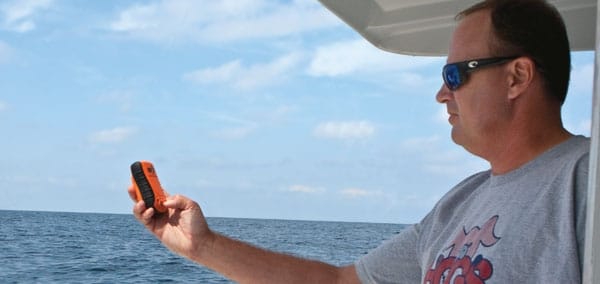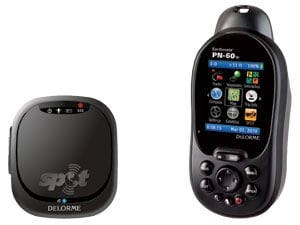
Anyone who spends much time out of sight of land knows the importance of checking in. Prudent mariners make a point of letting their whereabouts and status be known. Above and beyond that, marriages often hinge on it.
Cell phones can fade eight or 10 miles offshore; satellite phones are reliable but pricey. It requires a pretty constant level of need or an unlimited budget to justify maintaining a satellite phone account, and while the price of maintaining such an account is coming down rapidly, there is a simpler way.
The route to maintaining contact that works anywhere in the world has created a niche for itself. The Spot Satellite GPS Messenger is now in its second iteration and has spawned an interesting spinoff.
The newest version works basically like the original model. Hold the transmitter up so it can catch a satellite signal, and push a button to send a message via Globalstar satellite. The message is then sent to servers maintained by Spot, which then forward the message appropriately.
There are four types of messages. There’s the I’m OK e-mail that goes to preselected people to let them know you are safe. The same message posts a position and time on a Google Earth map on the Spot server so those at home can follow your progress. There’s a preconfigured e-mail message, such as “light the grill, fish 4 dinner,” that goes to designated e-mail accounts as well. On the troubleshooting side, a need assistance button notifies your personal contacts that you need help, or if you have opted for the $10 a year towing and assistance service through BoatUS, this button can be set up to activate that service. The fourth button, SOS, notifies the Geos International Emergency Response Coordination Center, which launches a full-blown search-and-rescue mission.
The redesigned Spot incorporates a number of improvements, such as a smaller size and lighter weight (5.2 ounces); covers over the SOS and help buttons, to eliminate any chance of accidental transmission; and a redefined palette of buttons that includes one for automatic tracking activation, another to send the I’m OK e-mail to the selected recipients and yet another for deploying a preconfigured custom message.

Automatic tracking is a $50-a-year add-on to the basic $99 annual service plan. Though it boosts the annual cost by 50 percent, it’s a popular feature, and most fishermen and boaters who buy the Spot opt for the tracking feature. When activated, it updates your position on Google Maps every 10 minutes for 24 hours, so it provides a nearly real-time record of your progress. Not only is it handy for others monitoring your whereabouts, but it also provides a savable record, an archive of your day on the water. “This feature is a big deal,” says Derek Moore of Spot. “Everybody loves this one. Turn it on and forget about it, and it keeps track of you automatically.”
The beauty of the Spot system is its simplicity, but a new wrinkle in the technology now offers expanded functionality. This emerged when Spot partnered with DeLorme, the map company.
“Spot came to us because their cus-tomers wanted maps with GPS,” explains DeLorme’s Charlie Conley. “We were looking for messaging capability. When the two companies came together, we were able to fulfill the need of both of our customer bases.”
The resultant product is the DeLorme PN-60w ($550), a handheld GPS plotter that comes with a communicator – essentially a Spot unit – that allows all the functions of the Spot Messenger system, plus the ability to write messages with the internal keyboard in the GPS. Granted, it limits your messages to 40 characters, which is not a lot of space, but with the right approach, u cn snd nfo hom 2 update yr location (that’s 37 characters). Or you can send a couple of messages if you have a lot more to say than you can cram into the 40-character limit. Within those boundaries it’s a cinch to say “running three hours behind schedule” or “out of fuel” or “plan change going 2 Bahamas cu next week.”
While the PN-60w is not being targeted specifically to fishermen and boaters, the company is missing a good bet. The setup is waterproof to marine standards, and the 3 gigabyte flash memory in the GPS handles NOAA and Navionics charts, as well as De-Lorme terrestrial cartography.
The cost of maintaining the PN-60w is a Spot annual subscription. Messages add 50 cents each to the bill. The PN-60w works only with its own communicator, not Spot’s device. However, if you drop the GPS unit overboard, the satellite communicator still functions as an emergency transmitter on the Spot network for SOS messages.









